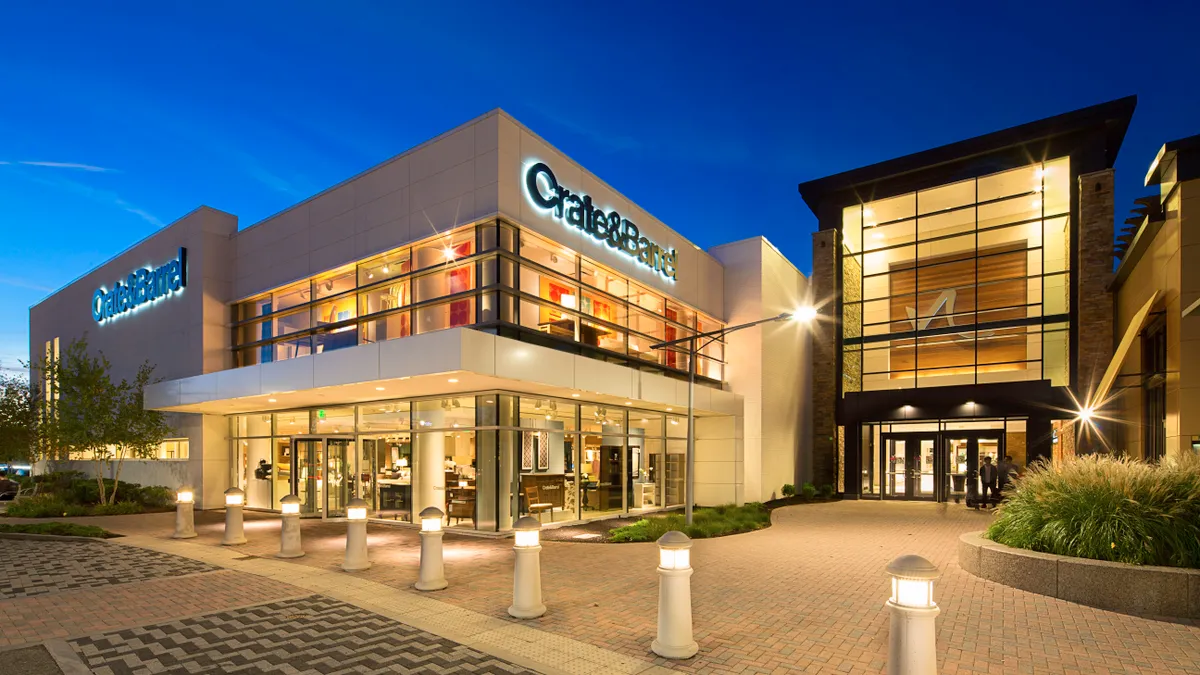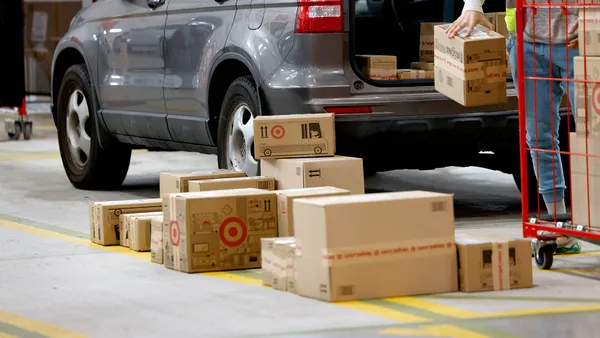Dive Brief:
- Crate and Barrel Holdings has announced a multi-year investment plan to improve inventory optimization, demand forecasting and delivery speeds.
- The "Bring it Home" plan — which includes doubling the home retailer's technology team over three years — will involve greater use of AI and automation for more efficient and quicker deliveries, according to a news release. The total investment amount was not disclosed.
- “We have learned so much over the past three years as we have navigated through both a global pandemic and a supply chain crisis,” CEO Janet Hayes said in a statement. “By leading with a modern mindset, we experienced unprecedented growth during these times of tremendous pressure and these investments will help us maintain that momentum.”
Dive Insight:
Placing inventory closer to the end customer is one of the plan’s key pillars. This will help Crate and Barrel meet customers' desires for delivery precision, reliability and flexibility, Chief Technology Officer Jason Booth told Supply Chain Dive.
Better inventory positioning can increase delivery speeds while also reducing transportation costs, but it requires adequate physical infrastructure and strong demand forecasting capabilities.
On the infrastructure side, Crate and Barrel is mulling "a broader distribution footprint," COO Mike Brewer told Supply Chain Dive. Crate and Barrel has multiple distribution centers, a slew of warehouses and cross docks known as “home delivery centers” it uses to reach customers.
"We are looking at ways we can get our physical footprint right, and then logically we're going to build the tools out that will allow us to see where that inventory is best fit," Brewer said.
In terms of forecasting, new technology team hires — ranging from engineers to data scientists — will help Crate and Barrel mine data for demand-related insights. The company will also tap into AI and machine learning advancements to optimize its inventory placement.
"In our old world, a 70% forecast accuracy was pretty strong," Brewer said. "What we're seeing as we start to look and evaluate what's available in the marketplace, and what we can do to build on top of that, we'll get our forecast accuracy way better than the old days.”














